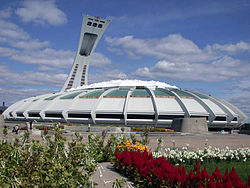
An inclined tower is a tower that was intentionally built at an incline. Towers are built with an incline in order to support the weight of another structure, such as the Montreal Tower. Some towers are built with an incline due to the steep terrain upon which they stand, or simply for aesthetics.




